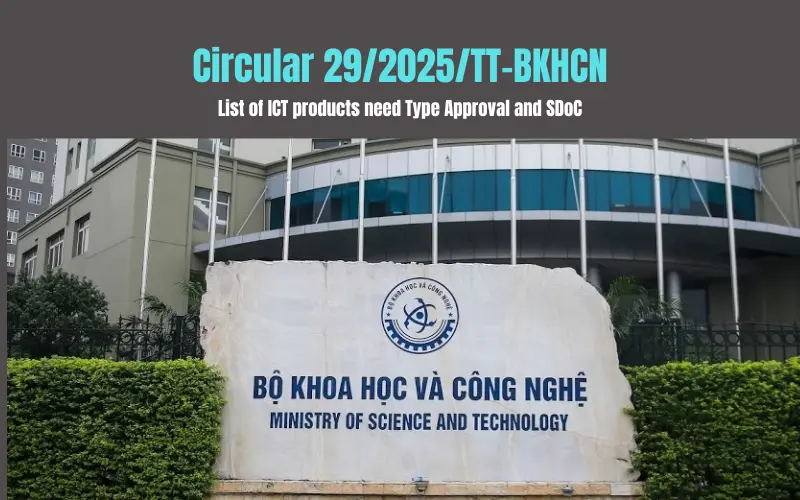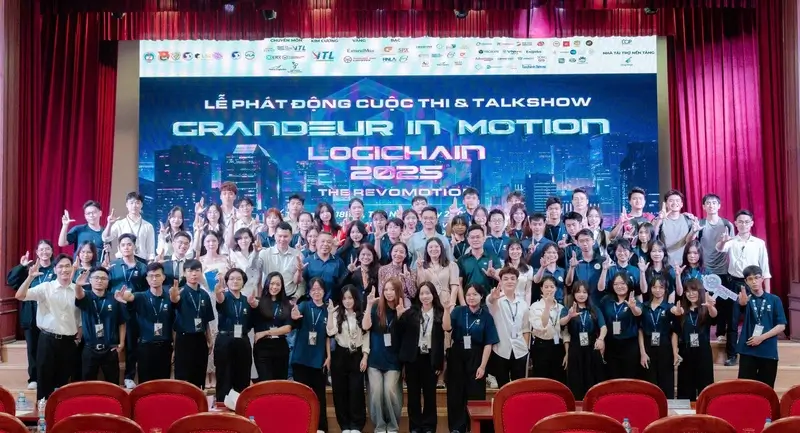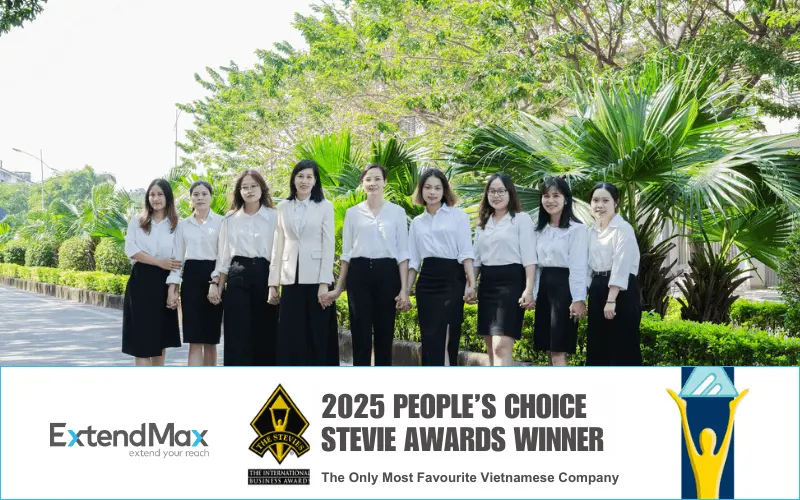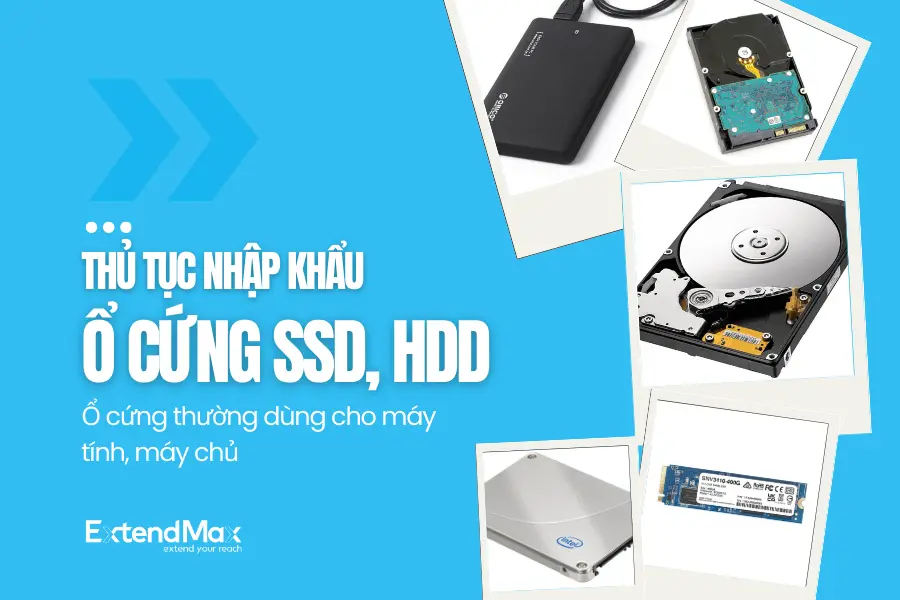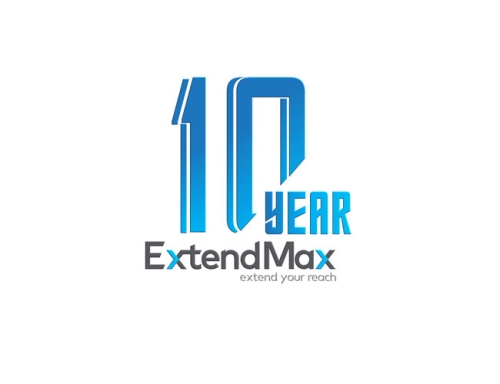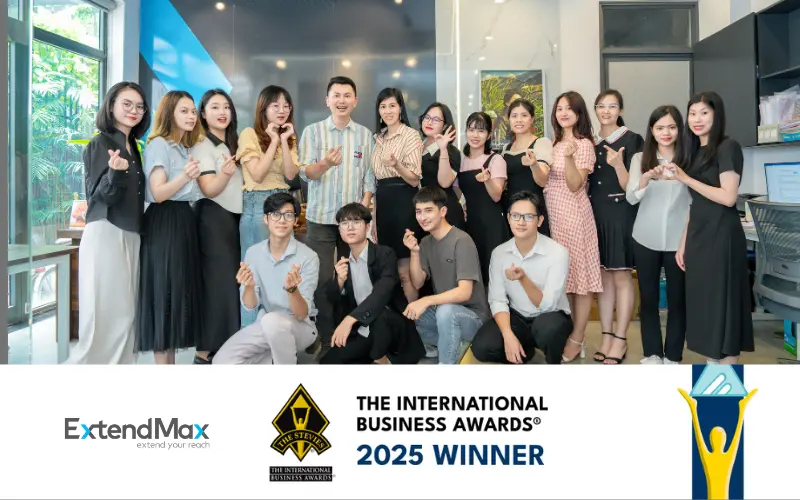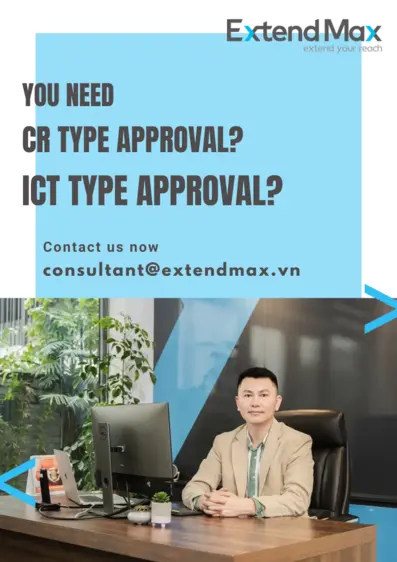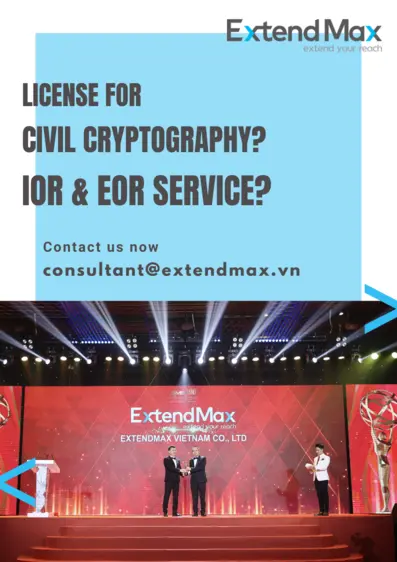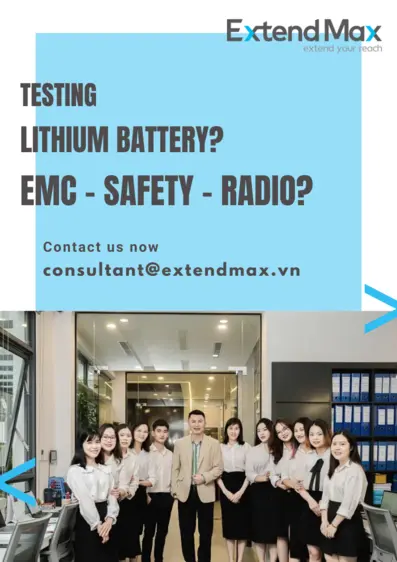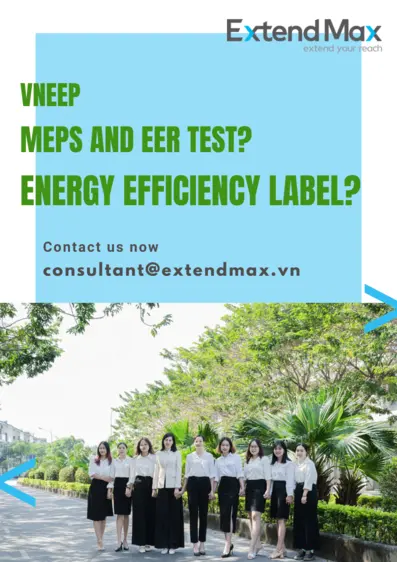The conformity certification of radio transceiver and information technology equipment (products under group 2 of the Ministry of Information and Communications) is forecasted to have many major changes in the near future. Accordingly, in some cases, goods and products will no longer be able to carry out certification method 1 (3-year validity type approval certificate) and must switch to certification method 7 (consignment certification). At the same time, for the use of documents of foreign manufacturers, applicant must also provide many additional documents for authentication method such as authentication by the representative office or branch company of the manufacturer in Vietnam, or authentication by the method of "Consular authentication". Those are the new requirements for the certification of conformity of group 2 goods of the Vietnam MIC, which is raise and implemented by the Telecom Metrology and Quality Center of VNTA (the only certification organization designated by the MIC at this moment). New changes shall apply from middle of May or early of June 2023.
The above major changes will enhance the "quality of the application dossier" for MIC regulation conformity certification, ensuring that the dossier is not faked or fasified. However, applicants apply will need to proactively prepare additional documents and budget for additional costs to meet the new requirements. At the same time, local test laboratories also need to improve their testing capacity to meet the sudden increase of market demand caused by the changes. Details of the changes are as follows:
1) How to write the name of "manufacturer" on the Type Approval certificate
| Before | Now | Impact | |
|
| List fully and in detail all information about manufacturer and factories on the Type Approval certificate, including the information of the processing factory (OEM) if any. | Products manufactured by different factories will require separate testing and certificates of conformity with each factory. More certificates are required for the same product. |
2) How to write the "place of manufacturing" on the certificate of conformity
| Before | Now | Impact | |
|
| List fully and in detail all information about manufacturer and factories on the Type Approval certificate, including the information of the processing factory (OEM) if any. |
Previously, the certificate of conformity issued to the manufacturer did not list the manufacturer's name and country of origin. These certificates of conformity are understood to be valid and can be used to import products manufactured in different factories and different countries of origin. Under the new requirements, manufacturers will have to carry out separate certification procedures for each factory and country of origin.
|
3) ODM/OEM factory ISO certificate accepted cases
Update: The content of this part 3) has been changed in the internal document issued by the Telecom Metrology and Quality Center of VNTA . Accordingly, the case of hiring ODM or OEM (not belonging to the same group, or the manufacturer does not have a representative agency in Vietnam) is still accepted with the condition that "factory audit" is carried out. The content below is the content that was updated on 13-June-2023, new points are marked with cyan blue.
| Before | Now | Impact |
| Proof of OEM factory is a written confirmation from the manufacturer. Validation is done through one of the following ways: - If the OEM hiring information is publicly available on the manufacturer's website: the handle officer compares the content on the website and on the confirmation document for authentication. - If the OEM hiring information is not public on the manufacturer's website: perform authentication in the following way. Documents of foreign manufacturers submitted with type approval dossier must be verified for validity in one of the following ways: 1) In case a foreign manufacturer has a representative office in Vietnam: the document must be stamped by the representative office in Vietnam for authentication or the representative office in Vietnam must have a written commitment to validate the manufacturer's documents. 2) In case the foreign manufacturer does not have a representative office in Vietnam: the document must be consularly legalized (if the manufacturer is type approval applicant) or must be committed to the accuracy of the document, verified through the document of the TA applicant (if the domestic importer is the TA applicant). | Only the following cases are accepted: 1) If the manufacturer has a representative office in Vietnam: The information of the OEM factory must be confirmed by the representative office in Vietnam; Oversea manufacturer can be holder of Type Approval certificate in this case. 2) If manufacturer does not have a representative office or branch company in Vietnam, the Telecom Metrology and Quality Center of VNTA only accepts the ISO 9001 certificate of the ODM/OEM factory for the cases that meet the conditions listed below and the Certificate Certificate of conformity is only granted to importers (manufacturers are not accepted to be holder of Type Approval certificate in this case). Case 1: Manufacturer and OEM / ODM factory belong to the same organization / group / ecosystem (evidence is required). For this case, the manufacturer must issue a written confirmation of the OEM/ODM factory (validated by email of the manufacturer) and the type approval applicant must have a written commitment and take full responsibility before the law for the accuracy of the product. content of the text of the letter issued by manufacturer. Case 2: When the OEM / ODM factory and manufacturer are not in the same organization / group / ecosystem, the Telecom Metrology and Quality Center of VNTA only accepts ISO 9001 and issues 03-year validity Type Approval certificate according to the certification system 1 after evaluating the actual production at the OEM / ODM factory (production line must be recorded in video) | In case the importer is not able to validate OEM Declaration Letter or the manufacturer does not have a representative office in Vietnam, or OEM/ODM factory does not support factory audit, TA applicant can only carry out certification of conformity according to method 7 (consignment approval / batch approval). With method 7, importer will need to have products tested and certified for each shipment, thereby needing to budget because the cost of testing and conformity will arise greatly. The testing period can also be extended by several weeks due to a sudden spike in testing needs. |
4) Requirements for using test reports which foreign manufacturers is report holder
| Before | Now | Impact |
| Authentication by stamping the seal of the manufacturer's representative office / branch company in Vietnam on the authorization letter allowing the importing company to use the test results In case the manufacturer does not have a representative office / branch company in Vietnam, the manufacturer will authenticate by sending a verification email to the email address of the document handling officer. | Representative office of foreign manufacturer in Vietnam can directly use the manufacturer's test report for TA application. Importers can use the can use test reports which manufacturer is report holder only when manufacturer issue a written LOA to allow such importers using the test report. The LOA must must be validated by manufacturer's representative office or branch company in Vietnam (if any) or must be consular legalized. | In case the manufacturer does not have a representative office in Vietnam and has no conditions for consular legalization, the importers cannot use the test reports which manufacturer is report holder like before as email authentication method will no longer be accepted. |
5) Requirements when using test reports issued by foreign testing laboratories
| Before | Now | Impact |
| The certification body accepts foreign test report according to the European standard system ETSI which is equivalent to the corresponding QCVN standard of the Ministry of Information and Communications. In the period from 2021 and earlier, the applicant is solely responsible for the legality of the test results and stamps the test results when submitting the application. From 2022 to now, the test results must be verified by the laboratory sending an email to the email address of the handling officer. | 1) For the test reports issued by the MRA testing laboratories: - Only acceptance test issued by MRA laboratory according to QCVN standards stated in the decision on recognition of the Ministry of Information and Communications, do not accept test results according to equivalent ETSI EN standards (except for cases specifically guided by the Ministry of Information and Communications in writing); - All MRA test reports must be validated through the confirmation email of MRA labs before conducting the assessment and issuing the type approval certificate. 2) For the test certificate issued by other foreign testing laboratories (not the MRA laboratories): - Only accept test reports for cases that have been instructed in writing by the Ministry of Information and Communications (eg: 5G function); - Temporarily accept verification results from manufacturer by email. | Foreign test reports issued according to ETSI EN standard (equivalent to QCVN in terms of technical limitations and test methods) will not be accepted. In case of testing at MRA laboratory, test results must be issued in QCVN format. |
6) Requirements when applying the modular conformity certification method
| Before | Now | Impact |
| It is acceptable to use the test reports issued for the module to apply for TA certificate for different host devices if the manufacturer has a written commitment that the installation of the module does not change the emission characteristics of the product. | If the report of module is issued to the module manufacturer: the use of test report must be authorized in writing by the module manufacturer (this document must be validate by the representative office of the manufacturer in Vietnam (if any) or must be consular legalized); + If test report of module is issued to an importer: Test report must list detailed information on types, model number, manufacturer of the host device with that module attached (the information of the listed host device must be the same with the information of the product applying for TA certification. | For the case where the module report is issued to the importer, because "the information of the finished product listed must be consistent with the information of the product applying for TA certification", this means that each test report issued for module is only accepted to apply for TA certification of one host device which listed in test report, not acceptable to apply for TA for other host devices. |
7) Re-open for issuing Exemption Letter after a short period of time stopping it
VNTA certification centers re-open for Exemption Letter application after a short of time temporarily stop since middle of may till first half of June.
ExtendMax's exclusive comments
In our opinion, the application of the regulation conformity certification methods of the MIC is in favor of "product quality management". This is reflected in the fact that group 2 products and goods managed by the Ministry of Information and Communications are applied a different certification method of conformity when "manufactured in a production line with a quality certificate" or not. Detail:
- For products produced by a production line with a quality certificate (ISO 9001, IATF 16949…), certification method 1 (typical sample test) will be applied with the validity period of the certificate is 3 years
- For products manufactured by a production line without a quality certificate, certification method 5 (factory audit) or certification method 7 (consignment certification) will be applied.
The application of the above certification method is different from the standard conformity certification method applied in other functional ministries. For example, the Ministry of Science and Technology classifies products to apply the method of certification of conformity in favor of the principle of "safety". Detail:
- Electrical and electronic products that are at risk of electric leakage when in direct contact with people (electric cookers, hair dryers, electric irons...) shall apply certification method 5 (factory assessment) or method certification 7 (consignment certification)
- Products that are less unsafe for humans and have little risk of electric leakage when in direct contact with people (refrigerators, washing machines, blenders, etc.), will apply certification method 1 with the validity period of the certificate is 3 years
To ensure that the ISO 9001 certificate and the records provided to the certification body are the most accurate, tamper-free, and legally enforceable at the highest level, the certification body is about to adopt a variety of requirements on the method of authenticating foreign documents related to the "quality certificate" of the production line that the enterprise must provide to the certification body. If the required documents cannot be provided or the documents cannot be authenticated by the method required by the certification body, the enterprise will not be granted a certificate of conformity according to the certification method 1 with long validity period (03 years) and should prepare budget to apply certification method 5 (with factory assessment) or method 7 (conformity certification according to batch) with higher cost.
In addition to the conformity certification documents listed on the VNTA's website, applicants may have to prepare additional documents on a case-by-case basis, including declarations of ODM/OEM factories, power of attorney. the right to use documents or test results, written commitments.... Some documents issued by foreign manufacturers must be authenticated by the manufacturer's Vietnam representative office, or must be consular legalized. These are also document verification requirements that are rarely found in other conformity certification bodies. The important things to pay attention to are as follows:
1) Product production line has quality certificate or not: Normally, ISO 9001 is the standard condition for foreign factories. Therefore, this is not a difficult requirement to meet. However, you should pay special attention to the following requirements on how to authenticate relevant documents.
2) When the manufacturer and the factory are different organizations: Currently, the specialization of manufacturing is taking place intensely across the world, there are many companies that only research and develop products and hire the ODM factories to manufacture and assemble products. This situation is very common in practice, for example, Apple products are manufactured in factories of Foxconn or Luxshare ICT... Through specialization in division of labor, production costs will be reduced significantly. However, in order to certify conformity, enterprises need to pay attention to providing "proof of conformity" as required by the VNTA's certification body for this case, including:
- In case a foreign manufacturer has a representative office in Vietnam: the document must be affixed with the seal of the representative office or branch company in Vietnam for authentication or the office or branch company in Vietnam must issue a written commitment to validate manufacturer's document. This is a possible requirement when the manufacturer's representative agency in Vietnam supports the document authentication. However, you may have difficulty authenticating with this method in the following cases:
- Buying goods from other countries, not under the company's official sales channel in Vietnam: Due to the fact that sales do not include the Vietnamese market, some representative agencies of manufacturers in Vietnam may refuse to authenticate, stamp the text. We have seen many similar cases in practice.
- Manufacturer's representatives in Vietnam only perform a few small operations, do not really know product information (e.g. Qualcomn Vietnam only performs R&D for some items, not really understanding much information Qualcomm modules sold to Vietnam). Therefore, the authentication will take a lot of time or the manufacturer's representative refuses to support because it is not really involved.
- When manufacturer does not have a representative office in Vietnam, the certification body only accepts cases where the OEM factories and manufacturer belong to the same organization/group (proof required) or factory must be audited and providing proof that the products are truly manufactured by such OEM / ODM factory. This means that even though the product is produced by a production line with a quality management certificate like ISO 9001, applicant may not able to apply the certification method 1 to get a certificate valid for 3 years if factory does not support audit.
3) For the case that the manufacturer does not have a representative office in Vietnam, the manufacturer must issue a written confirmation of the OEM factory (validity verification by email of manufacturer) and the applicant for certification of conformity must have a written commitment and take full responsibility before the law about the accuracy of the content of the manufacturer's documents.
This means that the TA applicant must make a written commitment to the accuracy of the content of a document that is not issued by itself (which is a document certifying the OEM factory produced by the manufacturer). promulgation). Therefore, importers should pay special attention to the relevant legal obligations. In case the enterprise does not have sufficient legal backgrounds and finds that it is not competent to commit or authenticate the documents of a foreign unit, the importing enterprise can carry out the certification of conformity according to method 7 ( batch certification)
4) Importers should not carry out certification of conformity according to the module test method: Because "the information of the finished product listed must be consistent with the information of the proposed product". This means that each test result for the module is only used to certify conformity for 1 finished product listed in the test results, not accepted for TA application for other finished products. This means that modular testing will not bring cost savings to importers, even complicate the process of preparing documents.
5) For foreign manufacturers that have not yet set up a representative office or branch in Vietnam, we recommend that you carry out the test and issue the test results which importer is report holder, or you should study the procedures for consular legalization in the your country.
6) For MRA laboratories, if they want to use test results to certify conformity, they must issue test results according to QCVN. Although this is difficult for MRA laboratories due to the procedure of adding QCVNs to the scope of the ISO/IEC 17025 certificate, this is a current requirement of the VNTA's certification body.
Note: The above requirements may be changed from time to time by the Telecom Metrology and Quality Center certification body, issued in writing or communicated directly to the applicant. Therefore, you should contact the Telecom Metrology and Quality Center directly to understand the requirements at the time you submit your application.
Contact information for market access requirements consulting
EXTENDMAX VIETNAM COMPANY LIMITED
Hotline: +84 915 836 555 | Hanoi: +84 24 6666 3066
Email: consultant@extendmax.vn | phuong.tran@extendmax.vn
HO: ExtendMax Villa, C01-L18 An Vuong, Duong Noi urban area, Duong Noi ward, Ha Dong district, Hanoi City, Vietnam
Test laboratory: BT02-21, An Hung urban area, To Huu street, La Khe ward, Ha Dong district, Hanoi City, Vietnam
If you find our article useful and valuable in practice applications, please support us by rating it, leaving your comment at the bottom of this article, and sharing it with your colleagues or the industry. Your review will be a great motivation for us to write more detailed and valuable procedural guides for importing, exporting organizations.
↓ ↓ ↓ ↓ ↓ ↓ ↓
Preview of Type Approval certificate with factory name listed
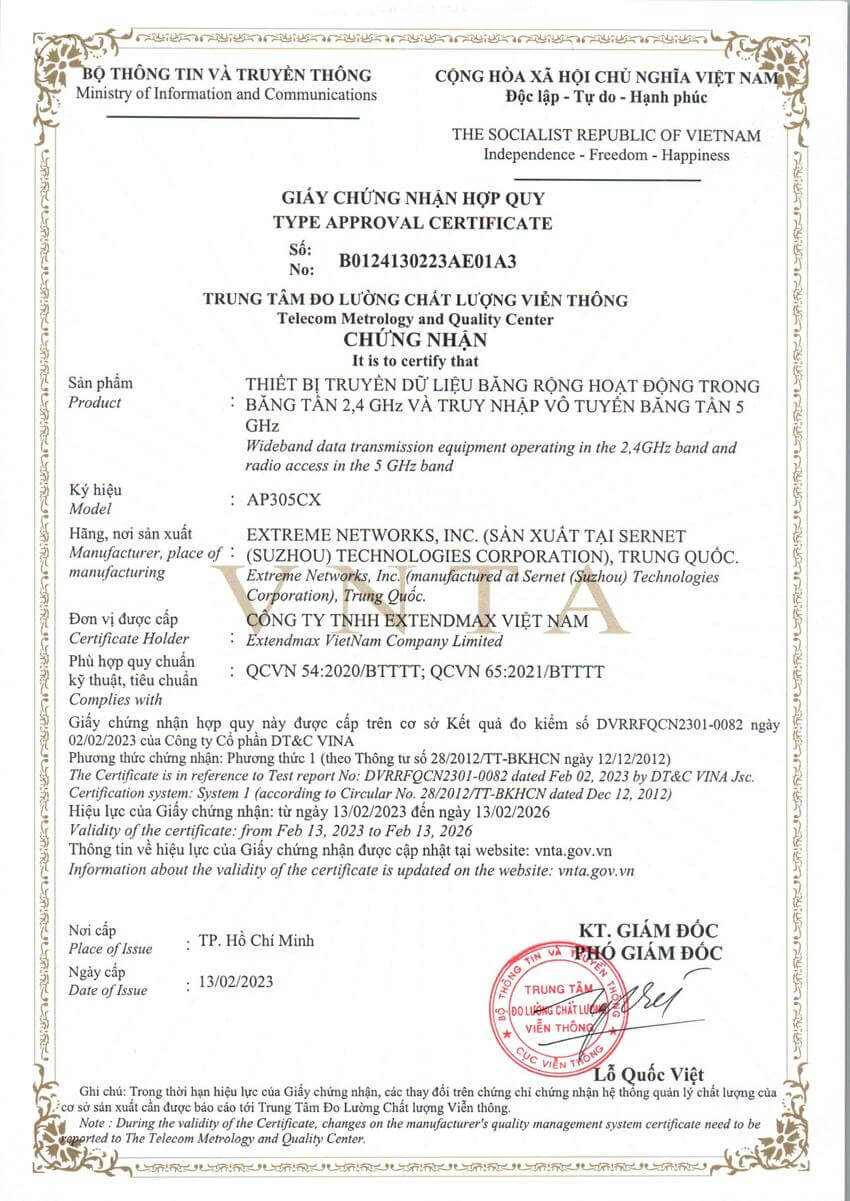
Preview of 3-year and per-lot type approval certificate for the same product
.jpg)
.jpg)


